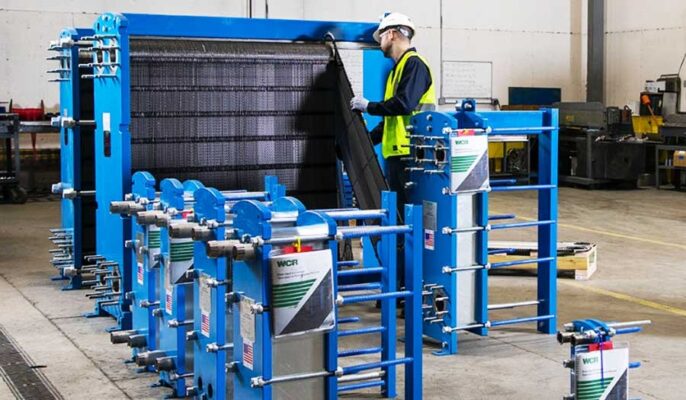Heat exchangers play a crucial role in the brewing process. They are used to transfer heat from one fluid to another, allowing brewers to cool wort quickly after boiling, maintain precise fermentation temperatures, and recover heat from hot water and steam. There are several types of heat exchangers commonly used in brewing, each with its own advantages and disadvantages.
In this article, we will discuss the different types of heat exchangers used in brewing and help you choose the right one for your brewery.
Why Heat Exchangers are Important in Brewing
Heat exchangers are an essential component of the brewing process. They are used to cool wort after boiling and maintain fermentation temperatures, which are critical for producing high-quality beer. Rapid cooling of wort after boiling helps prevent off-flavors and infections caused by bacteria, while maintaining precise fermentation temperatures ensures consistent results and maximizes yeast activity.
Heat exchangers are also used to recover heat from hot water and steam, which can be reused in the brewing process to save energy and reduce costs.
Plate Heat Exchangers
Plate heat exchangers are the most common type of heat exchanger used in brewing. They consist of a series of stainless steel plates that are pressed together, creating a series of channels through which the hot and cold fluids flow. The plates are designed to maximize heat transfer between the fluids, resulting in efficient cooling or heating.
Plate heat exchangers are compact, easy to clean, and highly efficient. They can cool wort from boiling to pitching temperature in a matter of minutes, and are also effective for maintaining fermentation temperatures. However, they can be susceptible to clogging if the wort contains a lot of hops or other solids, which can reduce their efficiency over time.

Shell and Tube Heat Exchangers
Shell and tube heat exchangers consist of a series of tubes that are housed within a larger shell. The hot and cold fluids flow through separate sides of the heat exchanger, with the hot fluid flowing through the tubes and the cold fluid flowing around the tubes in the shell.
Shell and tube heat exchangers are durable and reliable, and are effective for transferring heat between fluids with high temperature differentials. They are also resistant to clogging and can handle fluids with high solids content, making them a good choice for breweries that use a lot of hops or other solids in the brewing process.
However, shell and tube heat exchangers are less efficient than plate heat exchangers and can be more difficult to clean and maintain.
Counterflow Heat Exchangers
Counterflow heat exchangers consist of two tubes that run parallel to each other, with one tube inside the other. Hot and cold fluids flow in opposite directions through the tubes, allowing for efficient heat transfer.
Counterflow heat exchangers are highly efficient and effective for cooling wort quickly after boiling. They are also relatively easy to clean and maintain, and are resistant to clogging. However, they can be more expensive and complex than other types of heat exchangers, and may not be necessary for smaller breweries or homebrewers.
Choosing the Right Heat Exchanger for Your Brewery
When choosing a heat exchanger for your brewery, there are several factors to consider, including:
- Production volume: If you are a smaller brewer producing only a few hundred gallons per batch, a plate heat exchanger may be sufficient. However, if you are a larger commercial brewer producing thousands of gallons per batch, a shell and tube heat exchanger or counterflow heat exchanger may be a better choice.
- Solids content: If your brewing process involves a lot of hops or other solids, a shell and tube heat exchanger may be a better choice, as it is less susceptible to clogging.
- Efficiency: Plate heat exchangers are generally the most efficient type of heat exchanger, but may not be the best choice for every brewery. Consider your specific needs and requirements when choosing a heat exchanger.
- Maintenance: All heat exchangers require some level of maintenance, but some are easier to clean and maintain than others. Consider the time and resources required to maintain each type of heat exchanger when making your decision.
Conclusion
Heat exchangers are a critical component of the brewing process, allowing brewers to cool wort quickly after boiling, maintain precise fermentation temperatures, and recover heat from hot water and steam. Plate heat exchangers, shell and tube heat exchangers, and counterflow heat exchangers are the most commonly used types of heat exchangers in brewing, each with its own advantages and disadvantages.




